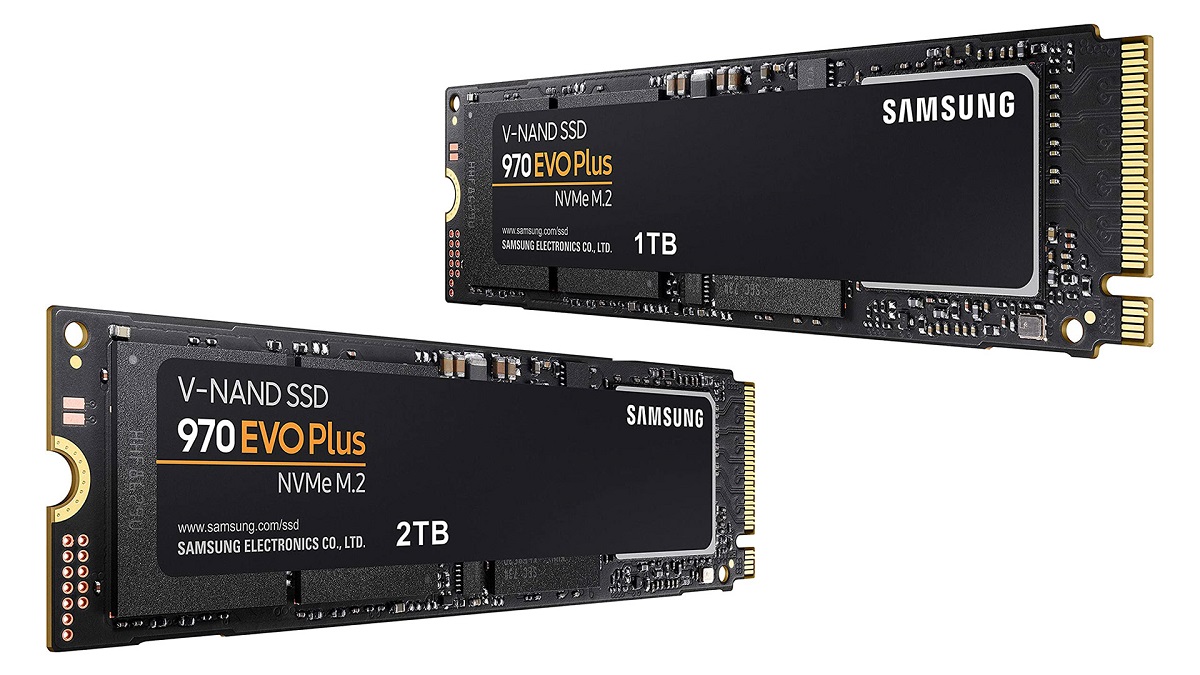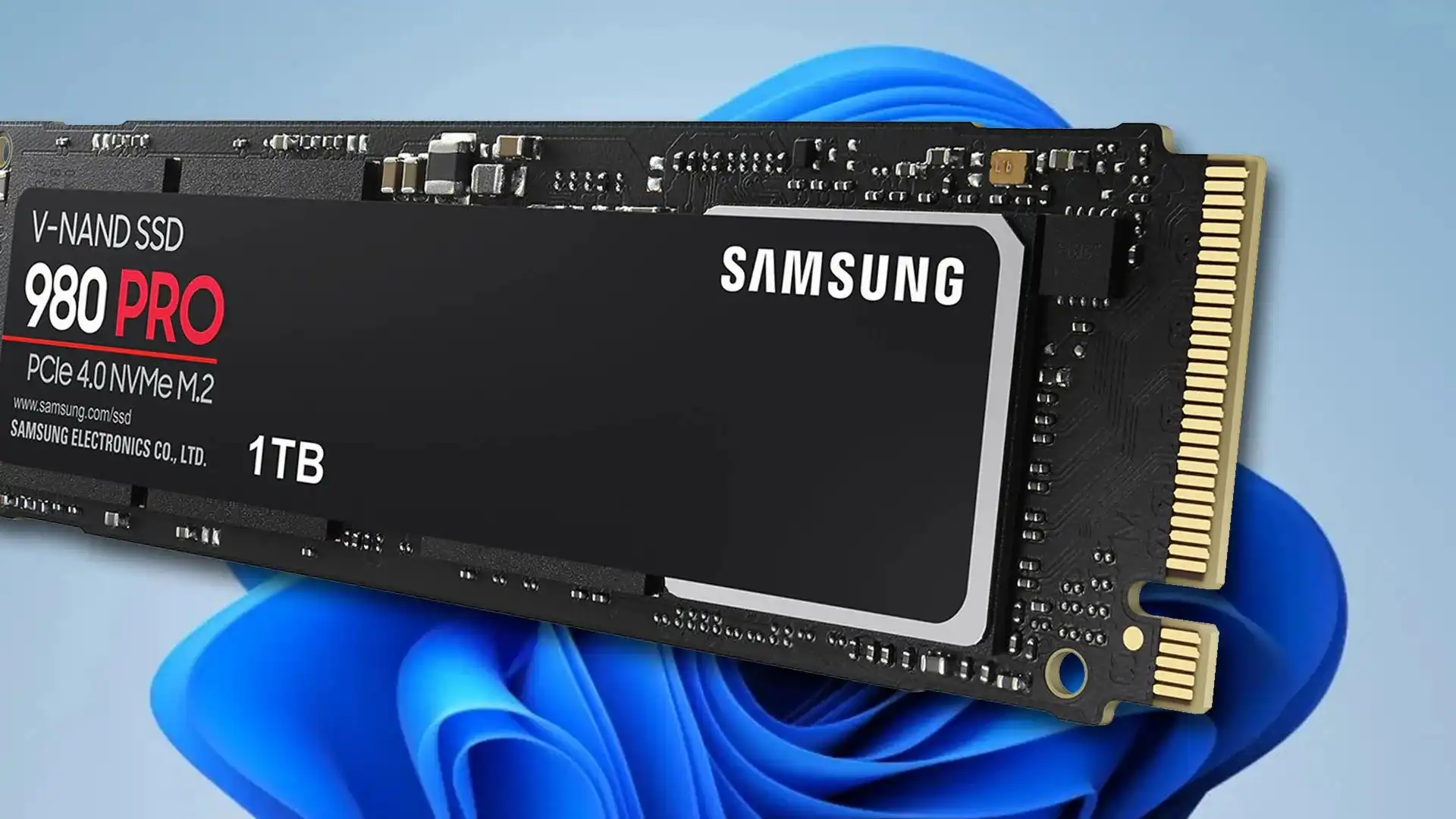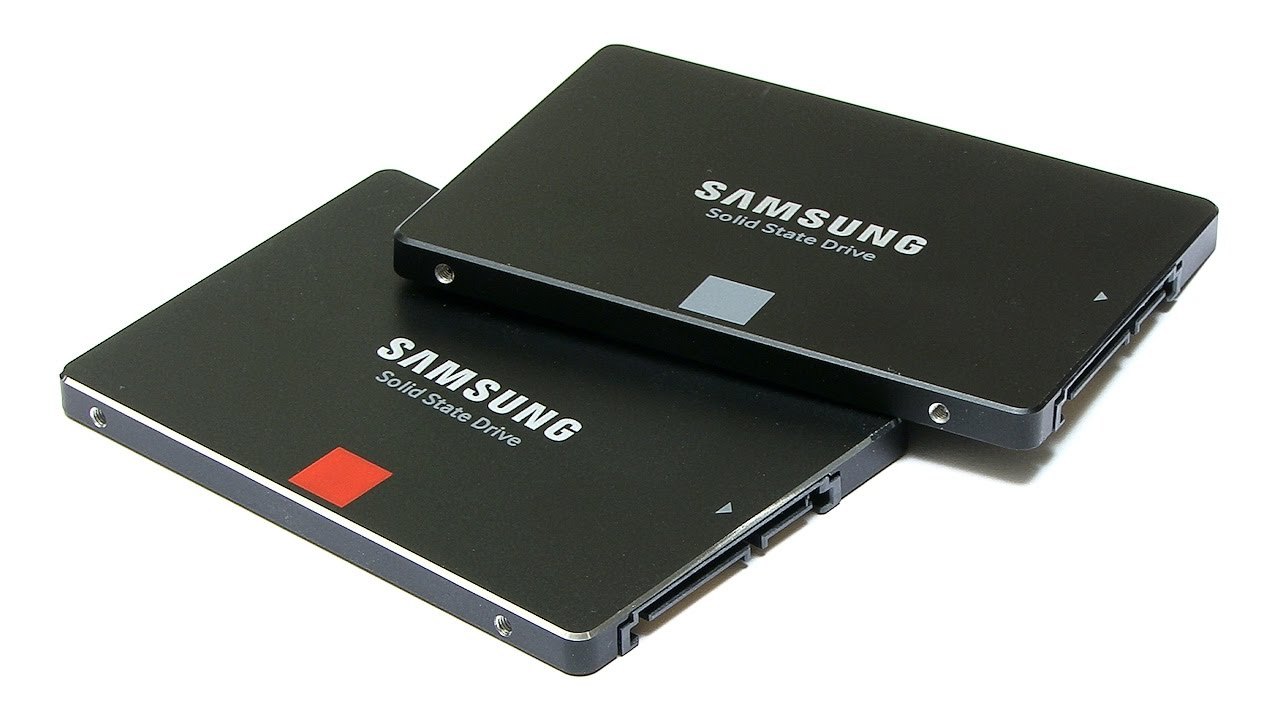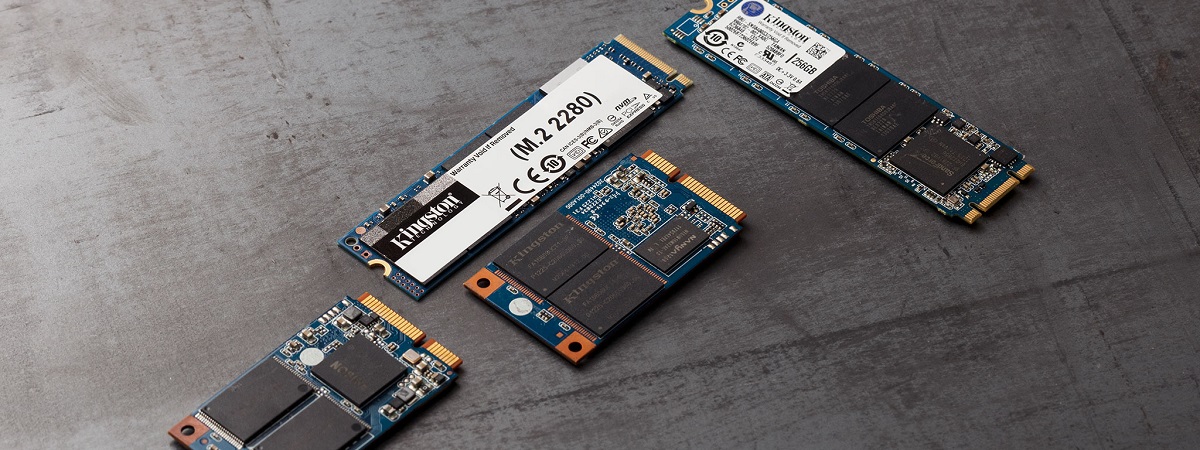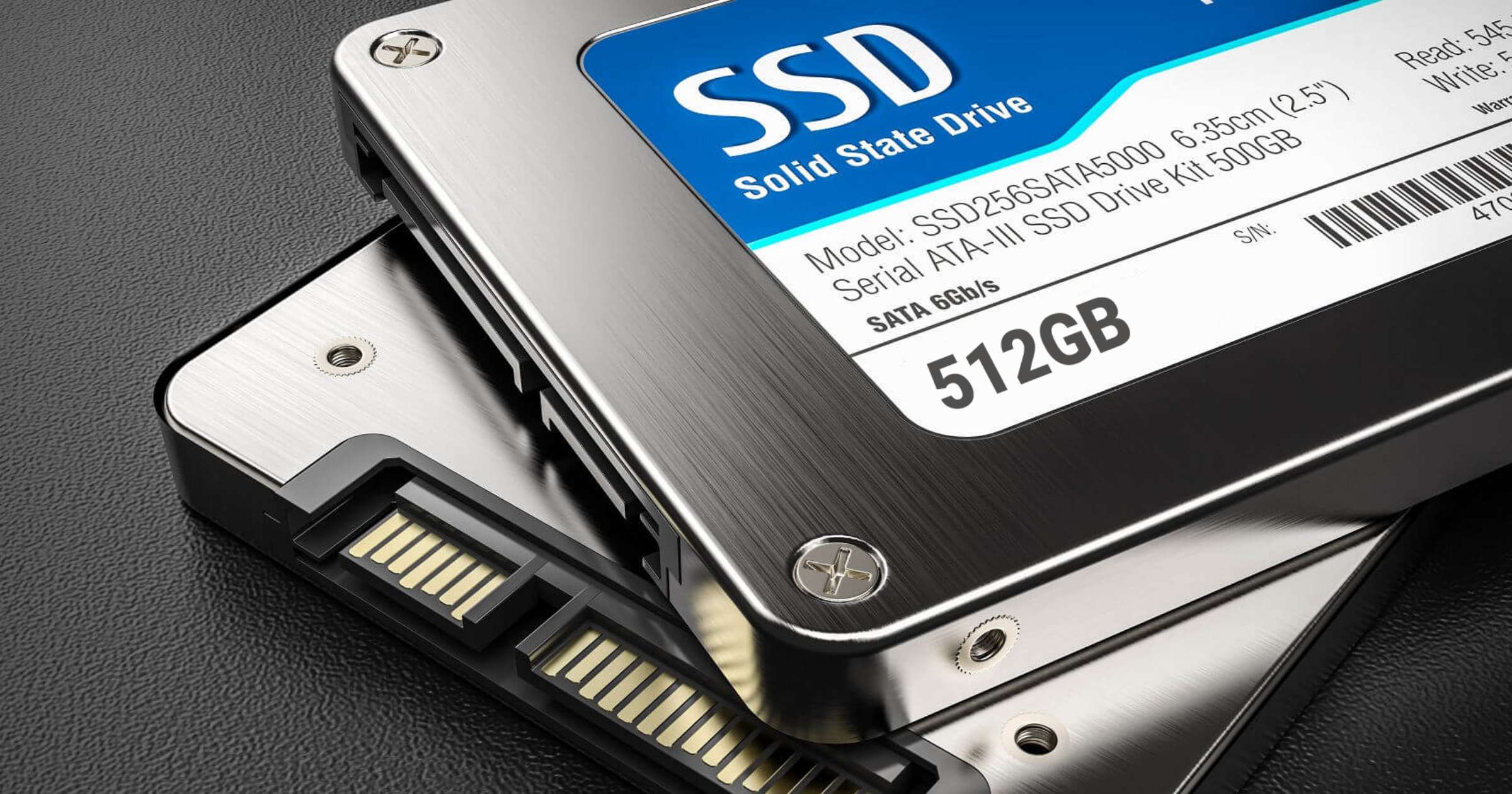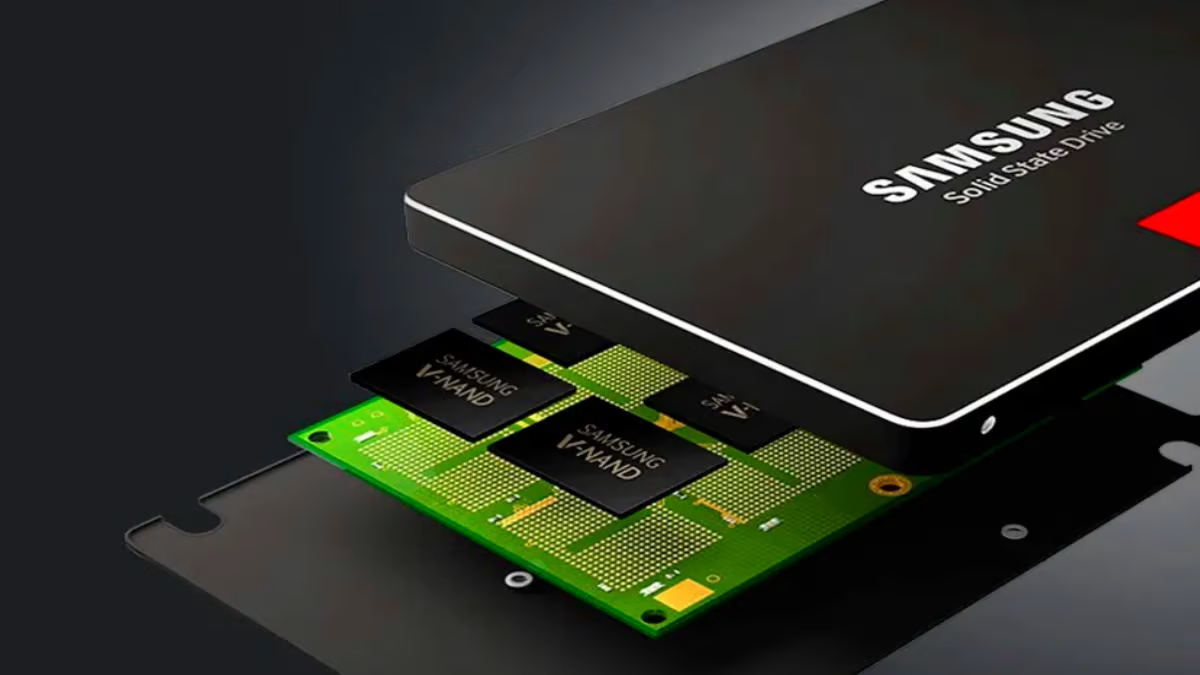Introduction
Are you ready to breathe new life into your computer by installing a brand new SSD? Upgrading to a solid state drive (SSD) can significantly improve your computer’s performance and speed, allowing you to enjoy faster boot times and better overall responsiveness. In this guide, we will walk you through the process of installing Windows onto your new SSD, ensuring a smooth and successful installation.
Before we delve into the installation process, it is crucial to note that replacing your existing computer’s hard drive with an SSD requires careful planning and preparation. It’s important to back up your data, gather the necessary tools and software, and create a bootable USB drive to install Windows onto your new SSD.
Ensuring the safety of your data is paramount, so take the time to back up your files before proceeding with the installation. This will prevent any potential loss of important documents, photos, videos, or other precious data.
In addition to backing up your data, you’ll need several tools and software to complete the installation process. These may include a screwdriver to open your computer’s casing and connect the new SSD, a USB drive to create a bootable installation media, and the latest version of Windows.
Creating a bootable USB drive is an important step in the installation process. This will allow you to boot your computer from the USB drive and initiate the installation of Windows onto the new SSD. Remember to format the USB drive and use the Windows Media Creation Tool or a similar software to create the bootable drive.
Once you have prepared the necessary tools and software, it’s time to physically connect the new SSD to your computer. This involves opening your computer’s casing, locating an available SATA port on your motherboard, and securely attaching the SSD.
After connecting the SSD, you’ll need to access the BIOS (Basic Input/Output System) of your computer to configure the necessary settings. This includes setting the boot priority and enabling the AHCI (Advanced Host Controller Interface) mode for optimal SSD performance.
With the necessary preparations complete, you can now proceed with installing Windows onto the new SSD. Follow the on-screen instructions, select the SSD as the installation destination, and allow the installation process to complete.
After the installation is finished, don’t forget to update drivers and software to ensure compatibility and security. Additionally, if you have files and applications on your old hard drive that you want to transfer to the new SSD, there are various methods available, including using data migration software or manually copying the files.
By following this guide, you’ll be able to successfully install Windows onto a new SSD and enjoy the benefits of improved performance and speed. So, let’s get started on this exciting journey of upgrading your computer and boosting its capabilities!
Preparing for Installation
Before diving into the installation process, it’s crucial to adequately prepare for the installation of Windows onto your new SSD. This will ensure a smooth and successful installation while minimizing the risk of data loss or other complications. Here are some essential steps to follow:
1. Backing up Your Data: Before proceeding with any changes to your computer’s storage, it’s important to back up all your important files and data. This includes documents, photos, videos, and any other files that you don’t want to risk losing during the installation process.
2. Gathering the Necessary Tools and Software: To complete the installation, you’ll need a few tools and software. Start by ensuring you have a screwdriver that is compatible with your computer’s casing, as you may need to open it to connect the new SSD. Additionally, you’ll need a USB drive to create a bootable installation media and the latest version of Windows for installation purposes.
3. Creating a Bootable USB Drive: To install Windows onto your new SSD, you’ll need to create a bootable USB drive. This will allow you to boot your computer from the USB drive and initiate the installation process. To create a bootable USB drive, you’ll need to format the USB drive and use software such as the Windows Media Creation Tool. Follow the tool’s instructions to create the bootable drive.
4. Connecting the New SSD: After preparing the necessary tools and software, it’s time to physically connect the new SSD to your computer. Start by shutting down your computer and opening the casing. Locate an available SATA port on your motherboard and carefully connect the SSD. Secure it in place using screws or any brackets provided with your computer casing.
5. Accessing BIOS: Once the new SSD is connected, you’ll need to access the BIOS (Basic Input/Output System) to configure the necessary settings for installation. Restart your computer, and during the startup process, look for an on-screen prompt to enter the BIOS. The key to access the BIOS may vary depending on your computer’s manufacturer, but commonly used keys include F2, F10, or Del.
6. Configuring BIOS Settings: Within the BIOS, locate the boot priority settings and ensure that the USB drive is set as the primary boot device. This will allow your computer to boot from the USB drive instead of the existing hard drive. Additionally, enable the AHCI (Advanced Host Controller Interface) mode for optimal SSD performance. Save any changes made in the BIOS and exit.
By following these steps to prepare for the installation, you’ll be well-equipped to install Windows onto your new SSD without encountering any significant issues. Taking the time to back up your data, gather the necessary tools, create a bootable USB drive, connect the new SSD, and configure the BIOS settings will ensure a smooth installation process. With the preparations complete, you’re now ready to move on to the next step: installing Windows onto your new SSD.
Backing up Data
Before proceeding with any changes or installations on your computer, it’s crucial to prioritize the safety of your data by backing it up. This step is essential to prevent the loss of important files or data during the installation process. Here are some key considerations and methods for backing up your data:
1. Determine Which Data to Back Up: Start by identifying the files and data that you want to back up. This may include documents, photos, videos, music, and any other files that hold significant value to you.
2. Choose a Backup Method: There are several backup methods you can choose from, each with its own advantages and considerations. The two main methods are:
– External Hard Drive: This involves connecting an external hard drive to your computer and copying your files onto it. Ensure that your external hard drive has enough capacity to store all your data.
– Cloud Storage: Cloud storage services such as Google Drive, Dropbox, or OneDrive offer convenient and secure options for backing up your files online. You can upload your files to these platforms and access them from any device with an internet connection.
3. Set Up and Execute the Backup: Depending on the method you choose, follow the respective steps to set up and execute the backup:
– External Hard Drive: Connect your external hard drive to your computer. Open your file explorer and manually copy and paste the files and folders you want to back up onto the external hard drive.
– Cloud Storage: Sign up for a cloud storage service if you don’t have an account already. Install the necessary software or application and follow the instructions to upload your files to the cloud storage platform.
4. Verify the Backup: Once the backup process is complete, take a moment to verify that all your important files have been successfully backed up. Double-check that you have copied all the necessary files and ensure that they can be accessed from the chosen backup method.
5. Test the Backup: It’s recommended to test the backup by attempting to open and access some of the backed-up files. This will ensure that the backup is complete and the files are stored in a readable format.
By backing up your data before proceeding with the installation of Windows onto your new SSD, you can have peace of mind knowing that your important files are secure. In the event that something goes wrong during the installation process, you can restore your data from the backup without any significant loss. Whether you choose to back up your files to an external hard drive or leverage cloud storage services, the key is to ensure that all your valuable data is safely stored and easily accessible.
Gathering Necessary Tools and Software
Before embarking on the installation of Windows onto your new SSD, it’s essential to gather all the necessary tools and software. Having these items ready will ensure a smooth and efficient installation process. Here are the key tools and software you’ll need:
1. Screwdriver: In order to connect the new SSD to your computer, you’ll likely need a screwdriver to open the casing. Before proceeding, make sure you have a screwdriver that is compatible with your computer’s casing. Refer to your computer’s manual or do some research online to determine the appropriate screwdriver type and size.
2. USB Drive: A USB drive is required to create a bootable installation media for installing Windows onto your new SSD. Ensure that you have a USB drive with sufficient capacity to accommodate the Windows installation files. It’s recommended to use a USB 3.0 drive for faster data transfer speeds, but a USB 2.0 drive will also work.
3. Windows Installation Media: You’ll need the latest version of Windows for the installation. Depending on your specific requirements, choose the appropriate version, such as Windows 10 Home or Windows 10 Pro. You can either purchase a physical DVD copy or download the installation files from the official Microsoft website.
4. Internet Connection: It’s important to have a stable internet connection during the installation process. This will allow you to download updated drivers and necessary software after the installation, ensuring compatibility and optimal performance.
5. Additional Software and Drivers: Once Windows is installed on your new SSD, you’ll need to update drivers and install necessary software for your computer to function properly. Check the manufacturer’s website for your computer’s components, such as the graphics card, motherboard, and network adapter, to download and install the latest drivers.
6. Anti-Malware Software: It’s highly recommended to have anti-malware software installed on your computer to protect it from potential threats. Before proceeding with the installation, ensure that you have reputable and up-to-date security software installed.
By gathering these essential tools and software ahead of time, you’ll be well-prepared for the installation of Windows onto your new SSD. Having a compatible screwdriver, a USB drive to create a bootable installation media, the latest version of Windows, a stable internet connection, necessary drivers and software, and anti-malware protection will streamline the installation process and help ensure a successful and secure transition.
Creating a Bootable USB Drive
One crucial step in the process of installing Windows onto your new SSD is creating a bootable USB drive. This allows you to initiate the installation process and ensure that Windows is installed on the new SSD. Here’s a step-by-step guide on how to create a bootable USB drive:
1. Format the USB Drive: Start by connecting the USB drive to your computer. Before proceeding, make sure there are no important files on the USB drive, as the formatting process will erase all data. Open File Explorer, right-click on the USB drive, and select “Format”. Choose the “FAT32” file system and select “Quick Format”. Click “Start” to begin the formatting process.
2. Obtain the Windows Installation Files: Next, you’ll need to obtain the Windows installation files. You can do this by downloading the Windows Media Creation Tool from the official Microsoft website (https://www.microsoft.com/software-download/windows10). Run the tool and follow the on-screen instructions to download the Windows installation files onto your computer.
3. Create a Bootable USB Drive: Once the Windows installation files are downloaded, run the Windows Media Creation Tool again. Choose the option to create installation media for another PC. Select the language, edition, and architecture that matches your requirements. Choose the “USB flash drive” option and select the previously formatted USB drive as the destination. Click “Next” to start the process of creating a bootable USB drive.
4. Wait for the Process to Complete: The tool will now begin creating the bootable USB drive. This may take some time, depending on the speed of your computer and USB drive. It’s essential to keep the computer powered on and the USB drive connected throughout the process. Once the process is complete, you’ll have a bootable USB drive ready for the installation of Windows.
5. Verify the Bootable USB Drive: To ensure that the USB drive is properly created and can be used for booting, restart your computer. Access the boot menu by pressing the appropriate key during startup (common keys for accessing the boot menu include F12, F10, or Del). Select the USB drive as the boot device and proceed to the next step. If your computer recognizes and boots from the USB drive, it means the bootable USB drive was created successfully.
A bootable USB drive is an essential tool for installing Windows onto your new SSD. By following these steps to format the USB drive, obtain the Windows installation files, create the bootable USB drive using the Windows Media Creation Tool, and verify its functionality, you’ll be ready to initiate the installation process. Keep the bootable USB drive in a safe place as you proceed with the installation and updates, ensuring a smooth transition to the new SSD without any issues.
Connecting the new SSD
After gathering the necessary tools and software, the next step in the process of installing Windows onto your new SSD is connecting the SSD to your computer. This involves physically installing the SSD into your computer and ensuring it is properly connected. Follow these steps to connect the new SSD:
1. Power Off Your Computer: Before proceeding, shut down your computer completely and disconnect the power cord. This step is essential to ensure your safety and prevent any damage to your computer components.
2. Open the Computer Casing: Use a screwdriver to remove the screws or any other fastening mechanisms that hold your computer casing together. Carefully slide off the side panel of the casing to access the internal components of your computer.
3. Locate an Available SATA Port: Look for an available SATA (Serial Advanced Technology Attachment) port on your motherboard. SATA ports are typically grouped together and are rectangular in shape with narrow connectors. Identify an empty SATA port that corresponds to the number of the SSD you are installing.
4. Connect the SATA Data Cable: Take the SATA data cable, which usually comes with the SSD, and connect one end to the SATA port on the motherboard. Ensure that the connector is properly aligned and that it inserts securely into the port.
5. Connect the SATA Power Cable: Find the SATA power cable from your power supply unit (PSU) and connect one end to the power connector on the SSD. The SATA power cable will have multiple connectors, so make sure to choose an available one that matches the SSD’s power connector.
6. Secure the SSD: Once the SSD is connected, carefully place it in an appropriate location within your computer casing. Make sure it is securely positioned, and use screws or brackets provided with your computer casing to fasten the SSD in place. Ensure that all connections are secure and the SSD is not loose.
7. Close the Computer Casing: After securing the SSD, put the side panel of the computer casing back in place, aligning it properly. Fasten the screws or any other fastening mechanisms you removed earlier to close the casing.
Now that the new SSD is connected to your computer, you are one step closer to installing Windows onto it. The physical connection of the SSD is essential for the data transfer and installation process. Ensure that the SATA data cable and power cable are securely connected to the motherboard and power supply, respectively. By following these steps, you can confidently proceed with configuring the BIOS settings and installing Windows onto your new SSD, ultimately improving your computer’s performance and storage capabilities.
Accessing BIOS
Accessing the BIOS (Basic Input/Output System) is a crucial step in the installation process, as it allows you to configure the necessary settings for installing Windows onto your new SSD. The BIOS is a firmware that is built into your computer’s motherboard and acts as the interface between the hardware and the operating system. Follow these steps to access the BIOS:
1. Power ON Your Computer: Start by powering on your computer and wait for the initial startup screen to appear. This screen usually displays the computer’s manufacturer logo or a basic system information prompt.
2. Identify the Key: Look for the key or combination of keys required to access the BIOS. Popular key options include Del, F2, F10, or Esc, but the specific key may vary depending on your computer’s manufacturer. The correct key is typically mentioned on-screen during the startup process. If you’re unsure, consult your computer’s manual or perform an online search using your computer’s make and model.
3. Press the Key: Once you have identified the key, press it repeatedly or hold it down immediately after powering on your computer. Timing is crucial, so you may need to experiment and try different timings to ensure success. If done correctly, this will bring up the BIOS or a BIOS configuration menu.
4. Navigate the BIOS: Once you have accessed the BIOS interface, you’ll be presented with a set of menus and options. Use the arrow keys on your keyboard to navigate through the menus and locate the settings you need to configure.
5. Locate the Boot Menu or Boot Priority: Look for the Boot menu or a similar option that allows you to set the boot priority. This is where you’ll configure your computer to boot from the bootable USB drive you created earlier. The exact location of this setting may vary depending on your BIOS version and manufacturer. Refer to your computer’s manual or online resources for specific instructions on locating the boot menu or boot priority option.
6. Set the Boot Priority: Within the boot menu or boot priority settings, rearrange the boot device priority so that the USB drive is set as the primary boot device. This will ensure that your computer boots from the USB drive when you start the installation process. Save any changes made in the BIOS before exiting.
By successfully accessing the BIOS and configuring the boot priority to recognize the bootable USB drive, you are now ready to proceed with the installation of Windows onto your new SSD. Remember to save any changes made within the BIOS before exiting. The ability to access and modify BIOS settings plays a crucial role in ensuring a smooth and successful installation process, allowing you to harness the full power and potential of your new SSD.
Configuring BIOS Settings
After accessing the BIOS, it’s important to configure the necessary settings to optimize the performance of your new SSD and ensure a smooth installation of Windows. The BIOS settings may vary depending on your computer’s manufacturer and model, but here are some essential configurations to consider:
1. Boot Priority: In the boot menu or boot priority settings, set the bootable USB drive as the primary boot device. This will ensure that your computer boots from the USB drive and initiates the installation process. Ensure that any other unnecessary boot devices are disabled or set lower in the boot priority list.
2. AHCI Mode: Advanced Host Controller Interface (AHCI) mode is a SATA interface that allows for better performance and features like hot-plugging. Locate the SATA settings in the BIOS and change the mode to AHCI. This will enable the full potential of your SSD’s performance.
3. Secure Boot: Secure Boot is a feature that adds an extra layer of security by only allowing digitally signed operating systems to boot. In some cases, it may interfere with the booting process from your bootable USB drive. Disable Secure Boot to ensure that your computer can boot from the USB drive without any issues.
4. System Date and Time: Take a moment to verify that the system date and time in the BIOS are accurate. Adjust the date and time if necessary, as an incorrect system date and time can cause various issues during the installation process.
5. Other Recommended Settings: Depending on your specific requirements and computer model, there may be additional settings that need to be configured in the BIOS. These can include enabling virtualization for running virtual machines, adjusting fan speeds for better cooling, or tweaking memory settings for optimal performance. Consult your computer’s manual or online resources for more information about these settings.
Note: It’s crucial to exercise caution when modifying BIOS settings, as incorrect configurations can lead to system instability or failure. Be sure to read the instructions and descriptions of the settings carefully before making any changes. If unsure, consult manufacturer resources or seek assistance from a knowledgeable professional.
Once you have configured the necessary BIOS settings, save the changes and exit the BIOS. Your computer will now boot from the bootable USB drive, and the installation process of Windows onto your new SSD will commence. The correct BIOS settings ensure that your computer recognizes the SSD and enables optimal performance. Taking the time to configure these settings correctly will contribute to a seamless installation experience and set the stage for a high-performing system.
Installing Windows
With the necessary preparations, including backing up your data, gathering tools and software, creating a bootable USB drive, connecting the new SSD, and configuring the BIOS settings, you’re now ready to install Windows onto your new SSD. Follow these steps to install Windows:
1. Boot from the USB Drive: Start by inserting the bootable USB drive into a USB port on your computer. Restart your computer and access the boot menu by pressing the appropriate key during startup (such as F12, F10, or Del). Select the USB drive as the boot device and press Enter.
2. Select Language and Keyboard Layout: Windows Setup will now initialize. Choose your preferred language, time format, and keyboard layout. Click “Next” to proceed.
3. Install Now: On the next screen, click “Install Now” to begin the installation process.
4. Enter Product Key: If prompted, enter the product key for your copy of Windows. This is usually found with the installation media or on a sticker on your computer. Click “Next” to continue.
5. Accept License Terms: Read and accept the license terms and conditions.
6. Choose Installation Type: Select the type of installation you want. Most users should choose the “Custom: Install Windows only (advanced)” option.
7. Select Installation Drive: Windows will show a list of available drives. Select the new SSD on which you want to install Windows and click “Next” to proceed.
8. Begin Installation: Windows will now format the SSD and begin the installation process. This may take some time, so be patient and do not interrupt the process.
9. Set Up Account: Once the installation is complete, Windows will prompt you to set up your user account. Enter your desired username and password and follow the on-screen instructions to customize your settings.
10. Complete Installation: After setting up your user account, Windows may go through some additional configuration steps. Once completed, you will be taken to the desktop, and Windows will be successfully installed on your new SSD.
Congratulations! You’ve successfully installed Windows onto your new SSD. Take some time to explore the new operating system, customize your settings, and install any necessary drivers and software to ensure a smooth and optimized experience. You can now enjoy the improved performance and responsiveness that come with Windows installed on an SSD.
Completing the Installation
After the initial installation of Windows onto your new SSD, there are still a few essential steps to complete before fully utilizing your system. These steps will ensure that your computer is up to date, secure, and ready for optimal performance. Here’s what you should do to complete the installation:
1. Update Windows: Once Windows is installed, it’s crucial to check for and install any available updates. This will ensure that your operating system has the latest features, security patches, and bug fixes. Go to “Settings” > “Update & Security” > “Windows Update” and click on “Check for updates”. Install any available updates and restart the computer if necessary.
2. Install Device Drivers: Device drivers facilitate communication between your computer’s hardware components and the operating system. Visit the manufacturer’s website for your computer and download the latest drivers for components such as the graphics card, sound card, motherboard, and network adapter. Install the drivers following the manufacturer’s instructions to ensure compatibility and optimal performance.
3. Activate Windows: Activate your copy of Windows to ensure it is genuine and fully functional. Go to “Settings” > “Update & Security” > “Activation” and follow the instructions to activate Windows using your product key.
4. Install Antivirus Software: Protect your computer from malware and other security threats by installing reliable antivirus software. Choose a reputable antivirus program, download it from the provider’s website, and follow the installation instructions. Once installed, perform a full system scan to remove any existing threats.
5. Customize Settings: Take some time to customize various settings according to your preferences. Personalize the desktop background, adjust power settings, configure display preferences, and customize other settings such as language, date, and time format.
6. Install Essential Software: Install any essential software that you regularly use, such as web browsers, office suites, media players, or productivity tools. Ensure that you download and install these applications from trusted sources to avoid any potential security risks.
7. Restore Data from Backup: If you backed up your data before the installation, now is the time to restore it onto your new SSD. Connect your backup media, such as an external hard drive or access your cloud storage account, and copy the files back onto your computer.
By completing these steps, you will have a fully functioning and up-to-date operating system on your new SSD. Your computer will be optimized for performance, security, and your personal preferences. Remember to regularly check for updates, maintain strong security measures, and perform regular backups to keep your system running smoothly in the long term.
Updating Drivers and Software
After completing the installation of Windows on your new SSD, it’s important to update your drivers and software to ensure compatibility, security, and optimal performance. Regularly updating these components helps to resolve any compatibility issues, enhances system stability, and protects against security vulnerabilities. Here are the key steps to take for updating drivers and software:
1. Windows Updates: Start by checking for Windows updates. Go to “Settings” > “Update & Security” > “Windows Update” and click on “Check for updates”. Install any available updates, including driver updates that Windows detects for your hardware devices.
2. Manufacturer’s Websites: Visit the websites of your computer’s hardware manufacturers, such as the graphics card, sound card, motherboard, and network adapter, to download the latest drivers. Look for the support section or downloads page on their respective websites and locate the drivers that match your specific model. Download and install the drivers following the manufacturer’s instructions.
3. Automatic Driver Update Tools: Consider using automatic driver update tools that scan your system, detect outdated drivers, and provide updates. These tools simplify the process by identifying the drivers that require updating and downloading the latest versions automatically. Some popular examples include Driver Booster, Driver Easy, and Snappy Driver Installer.
4. Software Updates: Regularly check for updates to the software applications you use. Most software programs have built-in update utilities that notify you when updates are available. Alternatively, you can visit the software provider’s website and look for a download or updates section. Download and install the latest software updates to ensure you have the latest features, bug fixes, and security patches.
5. Security Software: Keep your antivirus and other security software up to date. Configure the software to automatically check for updates and perform regular scans to ensure your computer is protected against the latest threats.
6. Enable Automatic Updates: Enable automatic updates wherever possible. This applies to both Windows updates and software updates. Automatic updates ensure that your system remains up to date without requiring manual intervention.
Remember to restart your computer after installing any driver or software updates to ensure the changes take effect. Regularly check for updates to keep your system secure and running smoothly.
Updating your drivers and software is an ongoing process. New hardware and software releases may require updates, and new features and bug fixes are regularly released. By staying on top of these updates, you can optimize your system’s performance, ensure compatibility with the latest technologies, and enhance the overall user experience.
Transferring Data from the Old Drive
If you have files and applications on your old hard drive that you want to transfer to your new SSD, there are several methods available to make the data migration process smooth and efficient. Here’s how you can transfer data from your old drive to your new SSD:
1. Manual File Transfer: The simplest method is to manually copy and paste your files from the old drive to the new SSD. Connect both drives to your computer and navigate to the files or folders you want to transfer. Copy them from the old drive and paste them onto the new SSD. This method is useful for transferring documents, photos, videos, and other personal files.
2. Data Migration Software: To streamline the data transfer process, you can use data migration software. There are various third-party tools available, such as EaseUS Todo Backup, Clonezilla, or Acronis True Image. These tools allow you to clone or migrate the entire contents of your old drive to the new SSD effortlessly. Follow the instructions provided by the software to clone or migrate the data.
3. Software-Specific Transfer: Some software programs allow you to export and import settings or data directly. For example, email clients like Microsoft Outlook or Mozilla Thunderbird provide options to export and import email accounts and messages. Similarly, certain games or productivity software may have built-in tools for transferring saved game files, preferences, or configurations between drives.
4. Cloud Storage and Online Services: Utilize cloud storage services or online file transfer services to upload your files from the old drive and then download them onto the new SSD. Popular cloud storage services like Google Drive, Dropbox, or OneDrive allow you to sync files between devices. Upload your files to the cloud storage, then sign in to the same account on your new computer and download the files onto the new SSD.
5. Reinstallation of Software: If you have applications installed on your old drive and want to transfer them to the new SSD, you will need to reinstall those applications onto the new SSD. Identify the installation files or download them from the software provider’s website, and then reinstall the software onto the new SSD. You may need to re-enter any license information or reconfigure settings.
Before transferring any data, ensure that your new SSD is properly connected and recognized by your computer. Perform a thorough backup of your old drive in case of any mishaps during the data transfer process. Verify the transferred data after the process is complete to ensure that all files are intact and accessible on the new SSD.
By using these methods, you can effectively transfer your data from the old drive to the new SSD. Whether you choose to manually copy files, use data migration software, utilize software-specific transfer methods, leverage cloud storage, or reinstall software, the goal is to have all your important files and applications available on your new SSD for a seamless transition to the enhanced performance and speed it offers.
Conclusion
Congratulations! You have successfully installed Windows onto your new SSD and completed the necessary steps to optimize your computer’s performance. By following the detailed instructions provided in this guide, you have transformed your computer into a faster, more efficient machine.
Installing Windows onto a new SSD can significantly improve your computer’s boot times, responsiveness, and overall speed. By adequately preparing for the installation, backing up your data, gathering the necessary tools and software, creating a bootable USB drive, connecting the new SSD, accessing the BIOS, configuring the settings, and completing the installation, you have successfully unlocked the full potential of your new SSD.
To ensure a smooth transition, remember to update your drivers and software regularly, transferring any necessary data from your old drive, and customizing your settings according to your preferences. By keeping your system up to date and implementing proper security measures, you can enjoy a reliable and optimized computing experience for years to come.
Don’t forget to take advantage of the improved capabilities of your new SSD by regularly backing up your data, maintaining regular maintenance routines, and regularly optimizing your system for peak performance.
Thank you for using this guide to install Windows onto your new SSD. We hope it has been helpful in transforming your computer and providing a seamless installation experience. Enjoy the enhanced performance, heightened speed, and overall improved usability that your new SSD brings to your computing endeavors!









